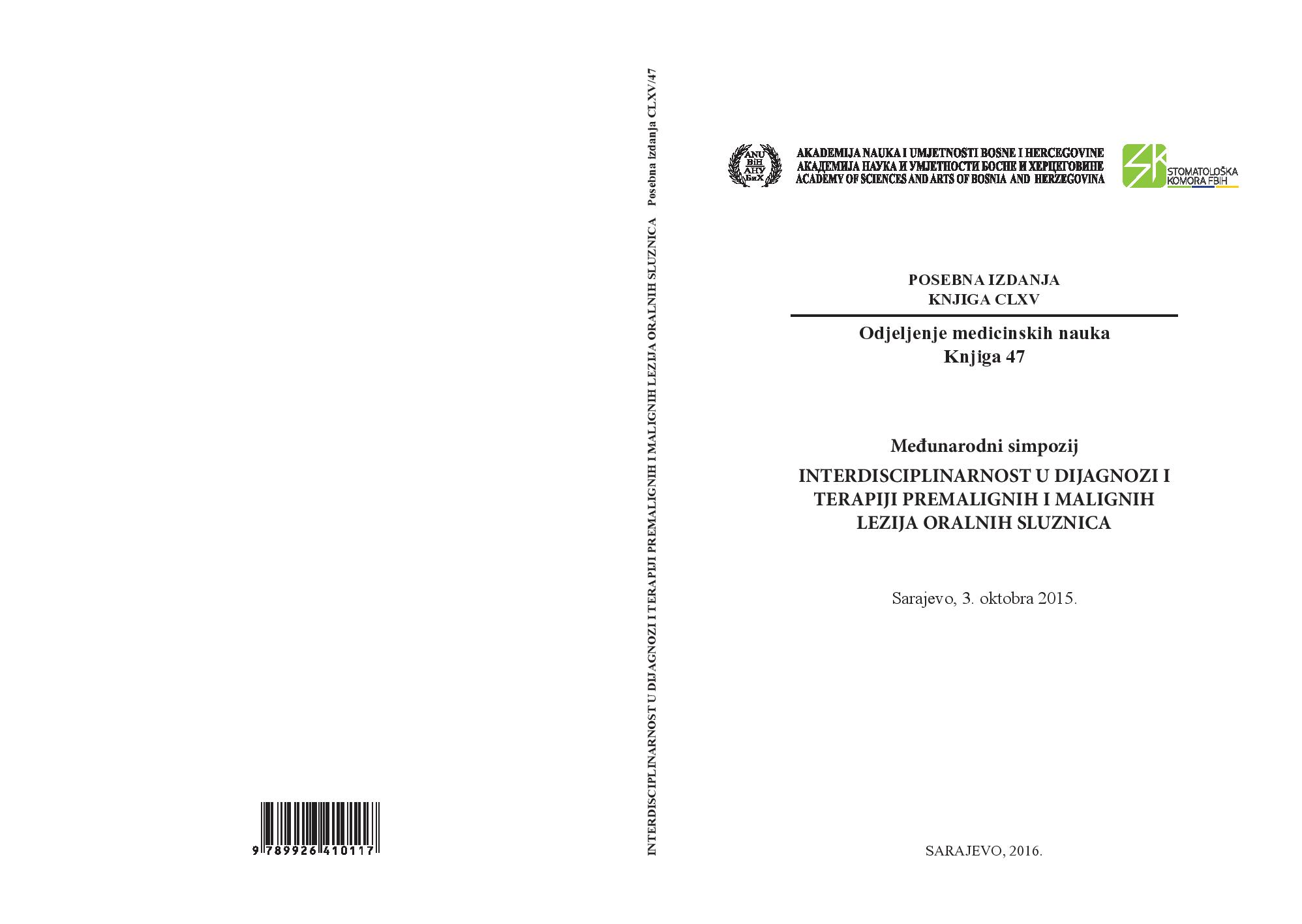RADIOLOŠKA DIJAGNOSTIKA TUMORA GLAVE I VRATA
DIAGNOSTICS RADIOLOGY OF HEAD AND NECK TUMORS
Author(s): Lidija Lincender-Cvijetić, Sandra Vegar Zubović, Dunja Vrcić, Spomenka KristićSubject(s): Health and medicine and law
Published by: Akademija Nauka i Umjetnosti Bosne i Hercegovine
Keywords: Head and neck tumors; MRI; PET/CT;
Summary/Abstract: This work aims at determining the place and role of radiologic imaging in diagnostics, and the selection of location and method of head and neck tumor treatment. Background: Malignant head and neck tumors are squamous cell carcinoma of the larynx, palatine tonsils, tongue, and the floor of the mouth under the tongue. Tumors of the salivary glands, jaws, nose, paranasal sinuses and ear are somewhat less common. They are mostly manifested in the form of asymptomatic formations, ulcers or mucosal changes (leukoplakia, erythroplakia). Additional symptoms depend on the location and expansion of tumors. Methods: In tumor expansion, and with a view of determining tumor stage, all available radiology diagnostic methods are used. In addition to clinical records and laboratory findings, nowadays frequently used are imaging methods such as MRI in tumor diagnostics and staging, MSCT for morphological analysis, and PET/ CT, which along with morphological aspects also provide functional data. Discussion: Along with the previously used conventional x-ray methods, diagnostic algorithm has changed with the appearance of contemporary imaging modalities. The most frequently used methodology is the MRI, which does not use ionizing radiation and has a high space resolution. It facilitates tumor diff erentiation thanks to tissue characterization and tumor staging. Besides the MRI and its modalities such as the Whole Body MRI, diff use sequences, MR angiography and spectroscopy, PET/CT is frequently used for molecular imaging in oncology as a constituent part of integral approach in the staging of the basic malignant illness, providing excellent diagnostic results. The functional contribution of the 18FDG PET/CT is higher than of other imaging methods. However, this technique uses ionizing radiation and has limitations in spatial and contrast image resolution, with already known false positive and false negative results. Conclusion: Based on the above said, in adopting protocols for diagnosing patients with advanced head and neck tumors, the MRI methodology, especially the Whole Body with diff use sequence, may be complementary with the 18FDG-PET/CT.
Journal: Posebna izdanja Akademije nauka i umjetnosti BiH
- Issue Year: 2016
- Issue No: 3
- Page Range: 69-82
- Page Count: 14
- Language: Bosnian

